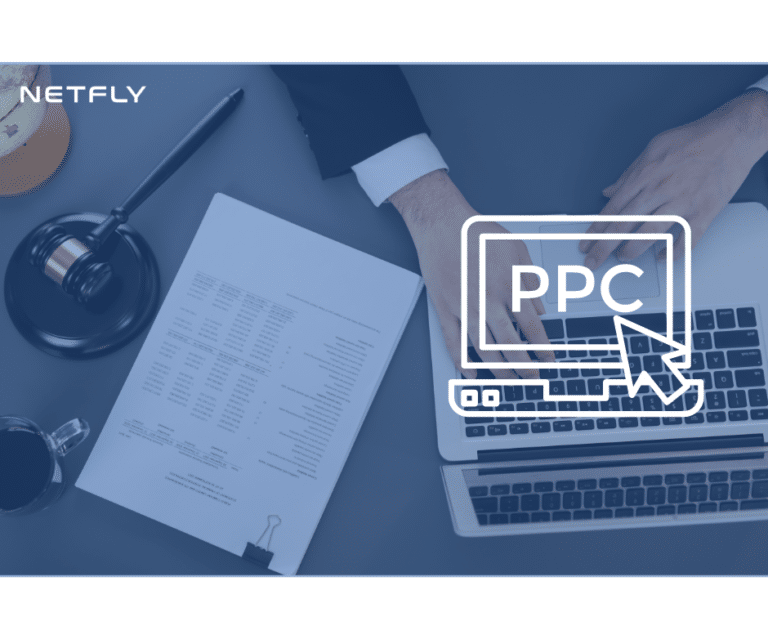As a legal professional, defining your brand voice and style isn’t just about choosing words; it’s about forging deeper connections with your audience. By maintaining a consistent tone and making legal concepts accessible, you’ll not only build trust but also enhance your firm’s credibility. Tailor your language to meet client expectations and integrate personal stories for authenticity that resonates. Keep your messaging clear across all platforms, and master persuasive techniques to captivate and influence. A balanced, authentic brand voice positions you not only as an expert but also as approachable—essential for client retention and acquisition. Next, understand practical steps that can transform your professional presence.
Key Takeaways
- Define a clear, consistent brand voice that reflects your legal expertise and values across all platforms.
- Tailor your communication style to meet the specific needs and demographics of your target audience.
- Simplify legal jargon and use persuasive language to make complex concepts accessible and engaging.
- Incorporate personal experiences and case studies to build trust and authentically connect with clients.
- Regularly gather feedback to refine your brand voice and ensure it resonates effectively with clients.
Understanding Brand Voice
Defining your brand voice is crucial; it’s how you communicate your firm’s identity and values to the world. Establishing a consistent tone throughout all your communications solidifies your professional image and guarantees that your message resonates clearly with your audience. It’s not just about what you say, but how you say it that counts. Tone consistency isn’t simply a stylistic choice—it’s a strategic tool that fosters trust and reliability in your client relationships.
To truly connect with your audience, you must understand their needs and expectations. This means tailoring your language and messaging to appeal directly to the clients you wish to serve. Whether you’re addressing potential clients through your website, social media, or direct communications, making a genuine audience connection is key. You’re not just providing legal services; you’re offering reassurance, guidance, and expertise. By aligning your brand voice with client expectations and preserving a consistent tone, you enhance your firm’s credibility and approachability.
Elements of Style in Law
In the world of legal practice, your style isn’t just about aesthetics; it’s a vital component of how effectively you communicate and persuade. Embracing elements of style in law means mastering the balance between formal elegance and clear, accessible language. Your professional demeanor is reflected not only in how you dress but also in how your documents are presented. Precision in language fosters trust and underscores your credibility.
Firstly, consider the structure of your legal documents. A well-organized layout, with headings and subheadings, aids in navigating complex information. This structural clarity is crucial, as it guides your reader through your argumentation without confusion.
Secondly, your word choice is paramount. Opt for specific, unambiguous terms that convey your message without room for misinterpretation. This specificity enhances the persuasiveness of your arguments, ensuring your points are both understood and impactful.
Lastly, maintain a tone that is both authoritative and approachable. While the legal field often necessitates a formal tone, it’s essential to adapt your language to the understanding level of your audience without diluting the strength of your argument.
Crafting Your Unique Voice
After mastering the foundational elements of style, you’re now ready to develop a distinctive voice that resonates uniquely across your legal communications. Crafting your unique voice isn’t just about choosing the right words; it’s about infusing your personality into your message. This personal touch transforms standard legal jargon into a relatable and engaging narrative.
To begin, consider what makes you distinct. Perhaps it’s your pragmatic approach to complex legal issues or your commitment to ethical integrity. Whatever your strengths, let them guide your authentic expression. This authenticity not only differentiates you from others but also builds trust with your audience. Remember, clients don’t just seek legal expertise; they look for a lawyer they can believe in and relate to.
Next, reflect on how your personal experiences have shaped your professional outlook. Integrating these aspects into your professional communication helps in establishing a voice that is unmistakably yours. Be mindful that this process is subtle—overemphasizing can seem contrived. Instead, weave your personal insights and values naturally into your legal advice.
Consistency Across Platforms
Maintaining your brand’s voice consistency across various platforms is pivotal for building a cohesive professional identity. Whether you’re engaging on social media, your firm’s website, or professional networks, your voice should resonate with the same core values and professional standards. This cross-platform consistency not only reinforces your brand but also builds trust with your audience.
When crafting messages, it’s vital to adapt your tone slightly to fit the platform while maintaining your overall style and message. For example, your LinkedIn posts might be more formal compared to Twitter, where you can be slightly more conversational. Yet, the underlying professionalism and expertise should be unmistakable across all channels.
To achieve this, create a style guide that explicitly defines your brand’s voice, tone, and the language appropriate for each platform. Regularly review and update the guide to guarantee it evolves with your brand and stays relevant to current trends without losing its core identity.
Engaging Your Target Audience
To effectively engage your target audience, you first need to thoroughly understand their demographics. Once you’ve pinpointed who they are, tailor your content to meet their specific needs and preferences. Employing persuasive language techniques can notably enhance your message’s impact, making it resonate more deeply with your audience.
Identify Audience Demographics
Understanding your audience’s demographics is essential for crafting effective communication strategies in the legal field. By delving into market research and constructing detailed client personas, you’re better equipped to address the specific needs, preferences, and challenges of your varied client base. This initial step isn’t just about gathering data; it’s about interpreting these insights to form a solid foundation for all your communication efforts.
Demographic targeting and audience segmentation are invaluable tools in this process. They allow you to tailor your approach to different groups within your audience, enhancing the relevance and impact of your messaging. For instance, the expectations and legal concerns of a startup entrepreneur might differ significantly from those of a seasoned corporate executive. Recognizing and adapting to these nuances in your audience can set you apart in a competitive legal landscape.
Tailor Content Appropriately
Having identified your audience demographics, you’re now poised to tailor your content to engage effectively with each segment. This phase, focusing on audience adaptation and content customization, is essential for establishing a connection with your varied legal clients. Whether they are corporate entities, small businesses, or individual clients, each requires a unique approach in communication.
Your next step is to employ message tailoring and communication adjustment. For corporate clients, your content should reflect a high level of professionalism and industry-specific knowledge, using terminology that resonates with corporate leaders. When addressing small businesses, simplify legal jargon and focus on delivering practical advice that directly impacts their daily operations. For individuals, create empathetic and supportive content that addresses personal concerns with clarity and warmth.
Utilize Persuasive Language Techniques
With an understanding of your audience’s needs, you’re now ready to master persuasive language techniques that captivate and influence your target audience. As a legal professional, your communication must not only inform but also persuade, forging connections that advocate effectively for your clients’ interests.
Here are three key techniques to enhance your persuasive communication:
- Establish an Emotional Connection: People decide based on emotions and justify with logic. Weave emotional elements into your narratives to resonate deeply with your audience. This could be through relatable stories or by highlighting the human impact of legal outcomes.
- Leverage Persuasive Storytelling: Every case has a story with a potential to persuade. Structure your content to present compelling narratives that outline challenges, invoke empathy, and showcase triumphant resolutions. This method not only retains attention but also sways opinions.
- Clarity and Precision: In your arguments, be clear and precise. Avoid legal jargon when unnecessary and explain complex terms when they are used. This transparency builds trust and aids in simplifying intricate legal concepts, making them accessible and persuasive to your audience.
Implementing these strategies will not only engage but also empower your audience, enhancing your overall effectiveness as a communicator in the legal sphere.
Tone and Legal Jargon Balance
Finding the balance between tone and legal jargon is crucial for effective communication in the legal field. As a legal professional, you must maintain a professional demeanor while also simplifying legalese to guarantee your message is accessible. The tone you adopt plays a crucial role in how your clients perceive and trust your advice. It’s about finding that sweet spot where you’re neither too formal to the point of being incomprehensible nor too casual to undermine your authority.
You should aim to present legal concepts in a way that is digestible to your audience. This doesn’t mean diluting the accuracy of the information, but rather, reframing complex terms into simpler language when possible. It’s your duty to bridge the gap between dense legal texts and practical understanding.
Visual Identity and Typography
In the field of legal communication, your visual identity and typography aren’t merely about aesthetics; they’re essential tools that enhance clarity and professionalism in your documents. As you craft your legal brand, understanding and applying key elements of typography and design will set you apart in the crowded marketplace.
- Choose Appropriate Fonts: Select fonts that mirror the seriousness and formality of the legal profession. Avoid overly ornate fonts that may detract from the document’s authority. Stick to classic serifs for body text and sans-serifs for headings to maintain readability and sophistication.
- Implement Brand Colors Strategically: Use your brand colors to accentuate important sections without overwhelming the text. Consistency in color use across all your materials reinforces your brand identity and aids in recognition.
- Stay Updated with Typography Trends: While tradition is key in legal typography, being informed about trends can guide subtle updates that keep your documents looking modern without losing the professional edge. This balance ensures your communications are both contemporary and credible.
Feedback and Iteration Process
As you refine your brand’s voice and style, establishing a strong feedback and iteration process is vital. This ongoing cycle of refinement and client input is fundamental to achieving continuous improvement and maintaining client satisfaction. By actively seeking and incorporating feedback, you make sure that your brand remains relevant and resonates with your target audience.
Start by gathering initial reactions from your clients—what do they think about your brand’s voice? How does it influence their perception of your firm? Use structured surveys, informal interviews, or direct solicitation during consultations to gather this valuable input. Remember, every piece of feedback is a valuable opportunity for enhancement.
Once you’ve collected the data, analyze it to identify common patterns or areas for improvement. This might involve adjusting your language, tweaking the tone, or even revamping certain aspects of your communication style. It’s important that these changes are implemented in a controlled manner, allowing room for further feedback to assess their effectiveness.
Case Studies and Success Stories
Case studies and success stories can powerfully illustrate how effectively your brand’s voice and style resonate with clients. By integrating client testimonials and strategic storytelling, you not only showcase your expertise but also build a trustful relationship with potential clients. These narratives provide a relatable and tangible demonstration of how your legal services lead to measurable results and heightened client satisfaction.
To further captivate your audience, consider these three key elements in your case studies:
- Client Testimonials: Include direct quotes from clients that reflect their personal experiences and satisfaction. This personal touch adds authenticity and relatability.
- Strategic Storytelling: Craft each case study as a compelling story with a clear beginning, middle, and end. Highlight the challenges faced, the solutions implemented, and the successful outcomes.
- Measurable Results: Quantify the success by evaluating outcomes—be it a favorable verdict, a significant settlement, or other legal victories. This not only substantiates your claims but also underscores the tangible value you provide.
Frequently Asked Questions
How Can AI Tools Help in Defining a Law Firm’s Brand Voice?
AI tools can analyze market trends and client feedback to refine your law firm’s brand voice, ensuring brand consistency and enhancing AI benefits. You’ll engage better and stand out in the competitive legal market.
What Role Does Cultural Sensitivity Play in Brand Messaging for Legal Professionals?
Cultural sensitivity in your brand messaging promotes effective cross-cultural communication and enhances diversity representation, making your legal services appealing and trustworthy to a broader, diverse audience. It’s vital for maintaining professionalism and inclusivity.
Are There Specific Colors That Convey Trust and Confidentiality in Legal Branding?
As they say, a picture paints a thousand words. In legal branding, colors like blue and green are key, reflecting trustworthiness and confidentiality due to their calm, professional tones in color psychology.
How Often Should a Law Firm Update Its Brand Style Guide?
You should update your law firm’s brand style guide every 3-5 years, keeping in mind brand consistency, industry trends, client feedback, and competitor analysis to stay relevant and trustworthy in the legal market.
Can Storytelling Be Effectively Incorporated Into Legal Brand Strategies?
Yes, you can effectively incorporate storytelling into your legal brand strategies. Narrative branding enhances client communication and legal storytelling strengthens your brand identity, making your firm more relatable and trustworthy to clients.
Conclusion
As you sculpt your brand’s voice and style, remember it’s your beacon in the legal wilderness, guiding clients to your expertise. Maintaining consistency, embracing feedback, and refining your approach will guarantee that your voice not only resonates but also reverberates across your audience. Let your brand be both a mirror and a window—reflecting your values and offering a clear view into your professional ethos. Forge ahead, the pen is mightier when it writes in your unique tone.










